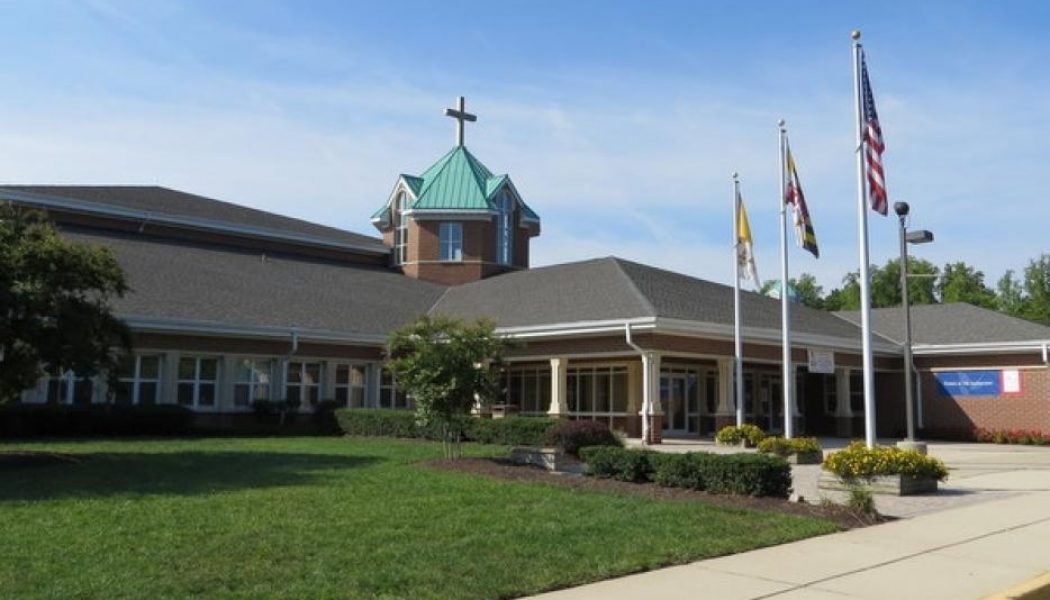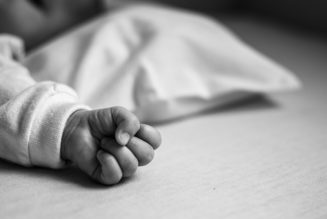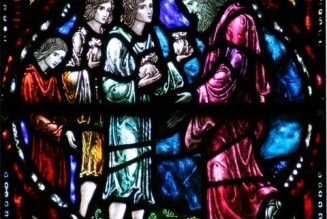
GAMBRILLS, Md. — When a third-grade girl at School of the Incarnation here told her classmates she was a boy, parents of other students were surprised to learn that the Archdiocese of Baltimore had agreed to cooperate with her new identity.
In the face of cultural trends that suggest someone can choose a gender different from his or her biological sex at birth, many parents who send their children to Catholic schools expect them to uphold the Church’s teaching that gender and sex cannot be completely separated.
Indeed, a 2019 document on gender theory in education from the Vatican’s Congregation for Catholic Education states that Catholic schools have a legitimate aspiration to maintain the Church’s understanding of human sexuality, which communicates that each human person has an immutable male or female biological identity. It also makes clear that gender ideology “denies the difference and reciprocity in nature of a man and a woman and envisages a society without sexual differences, thereby eliminating the anthropological basis of the family.”
Still, the Archdiocese of Baltimore reportedly approved accommodations to enable the student, whose father at the time was an administrator at the school, to present herself as a boy. She was allowed to use a masculine name, gender-neutral pronouns and a private bathroom. Furthermore, parents discovered that the school’s parent/student handbook had been altered to include “gender identity and expression” in the sections on discrimination and bullying.
As other dioceses around the country — among them Springfield, Illinois -— have crafted clear policies on how they will define gender in conformity with Church teaching, Baltimore has taken a different tack by incorporating language about gender identity and expression into its own policies and those in school handbooks. The archdiocese did not respond to questions from the Register about when and why the changes were made.
In Springfield, a policy adopted in January states that Catholic parishes, schools, institutions and departments will honor a person’s biological sex assigned at birth, not someone’s gender orientation. This means gender pronouns that match the sex at birth will be used in addressing each person and in all documentation. Additionally, on diocesan and parish property, everyone must use bathrooms and locker rooms that conform to their biological sex.
The policy also says children should not be encouraged to change their sex to match their gender identity, but adds that the diocese will not bar children who do not identify with their birth gender from its schools if they and their families agree to comply with the policy.
Similar guidelines approved by the bishops of the Minnesota Catholic Conference for Catholic schools and religious education call for student names and pronoun usage to correspond with a person’s identity as male or female that is congruent with his or her biological sex. The guidelines also cover access to facilities and overnight accommodations and eligibility for single-sex activities.
‘Dangerous’ and ‘Misleading’?
Patrick Reilly of the Cardinal Newman Society, which provides a resource guide to human sexuality policies for Catholic schools, said it is dangerous and misleading for Catholic schools to declare protected categories like “sexual orientation,” “gender identity” or “gender expression” in nondiscrimination statements.
It is “dangerous, because a lawsuit is all but inevitable, misleading, because judges and the court of public opinion will define these terms according to the dictates of gender ideology, which is inconsistent with Catholic teaching.”
The Newman Society has urged Catholic schools to limit nondiscrimination statements to the minimal language required by law, then craft policies that explain clearly and frankly the school’s moral expectations for employees, with firm grounding in Catholic teaching.
However, with no such policy, as suggested by the Newman Society, in place in the Baltimore archdiocese, the situation at School of the Incarnation left many parents upset and searching for answers.
Before the girl’s father resigned on Nov. 6, saying he had a fundamental disagreement with certain teachings of the Church, parents said they were particularly concerned that as a school employee, he was in a position to advance his daughter’s new identity and compel those he supervised to comply.
However, in a letter to George and Theresa Fritz, grandparents of three students in the school, Archbishop William Lori said that although the faculty had been informed of the child’s new name and a request from her parents that gender-neutral pronouns be used for her, no teacher or student was required to use them and those who did not would not be subjected to disciplinary action.
Still, parents who had formed the group Archdiocese of Baltimore-Parents Protecting Catholic Identity pointed out that by the time the girl’s father resigned, most of the children in the girl’s third-grade class already were calling her a boy.
In a Nov. 7 Facebook post announcing his resignation, the father said, “I know y’all are excited. I am too. I’m also proud and excited that I finally get to say publicly that my courageous youngest child is a transgender boy.”
His post, which elicited more than 300 positive reactions and more than 80 comments, all supportive, closed with, “I’ve got lots more to say and that will come later…”
As of the time this article was published, the girl and her older sister were still attending the 750-student, pre-K-8 school, although one response to the father’s Facebook post suggested the parents might seek a new school.
Archdiocesan and School Response
Before the father resigned, School of the Incarnation had attempted to address the Protecting Catholic Identity group’s concerns by providing in-service training for faculty to address issues presented by the situation, offering special religion classes for students and arranging for a moral theologian to meet with the child’s parents to clarify Church teaching on the matter.
In his letter to the Fritzes, Archbishop Lori outlined the steps taken by the school and said, “I believe that every attempt is being made to be faithful to our Church’s teaching in all areas of the school’s life.”
However, George Fritz said he considered the accommodations for the student to be contrary to the Catholic faith.
“This whole situation is completely foreign to me,” he said. “I don’t understand why the hierarchy is not standing up and saying this is wrong and an abomination in the sight of God.”
School administrators, including the girl’s father, did not respond to messages from the Register, and calls and emails to the archdiocese elicited only a brief statement from Mary Ellen Russell, director of community affairs. It said the archdiocese could not comment on the specifics of a matter involving any student, but that no parents or teachers had been asked to act or speak in a manner inconsistent with Catholic teaching or their consciences.
The school and the archdiocese responded similarly to concerned parents, citing privacy regulations.
Still, not all parents in the school were upset about the situation. Many in a private Facebook group applauded the father for his stance and expressed regret that he had had to leave.
Confusing to Children
The mother of a child in the girl’s class, who asked not to be identified, said she fears that many parents either do not understand what the Church has to say about gender identity are afraid to speak up about the situation.
“I think people are so worried about being shunned or being considered not kind or inclusive,” the mother said. “The school really pushes being loving, kind and inclusive, but it’s not loving, kind and inclusive to believe something that is not true.”
She said she had noticed during the previous school year that the girl had a more boyish look because her hair was cut short and she wore pants. The school uniform has a pants option for girls, but most girls wear the skort or jumper, making the girl appear more like one of the boys, the mother said. Nonetheless, she was surprised to learn from her child of the girl’s gender-identity announcement in September. And, she said, “I didn’t expect her father being our Catholic school [administrator] to ever support a gender change of any kind because it’s just wrong.”
Since hearing the girl say she was a boy, she said her child has been confused and has continued to talk about it. “We said this student is a girl and that you don’t have to call her by the new name.”
Despite assurances from the school that no one was being forced to go along with the child’s new gender identity, she said, “When a child is affirming to her peers she’s a boy when they know she’s not and it’s not being corrected, the school is supporting it and it’s going against the Catholic faith.”
If the girl is going to remain in the school, she would prefer that she resume using her previous name. She also would like the school handbook changed to better reflect Catholic teaching.
Likewise, Steve Halligan, a member of the Restoring Catholic Identity group who has three children in the school, wants the group to work toward having the “gender identity and expression” language removed from the school handbooks. Those changes, he said, were never approved by the school board nor called to the attention of parents.
Halligan said if the girl stays in the school, he thinks her self-identity as a male should not be recognized. “We’re a compassionate people, but we shouldn’t make accommodations in a Catholic school for a girl saying she’s a boy.”
Responding Compassionately
At a 2018 seminar the Archdiocese of Baltimore sponsored on “The Catholic Church and Gender Identity,” John-Mark Miravalle, professor of systematic and moral theology at Mount St. Mary’s Seminary in Emmitsburg, Maryland, said although the Church denies the core idea of the transgender movement that someone can separate his or her gender from one’s biological sex, it and its ministers can seek to help those experiencing gender confusion by showing them genuine compassion.
However, he distinguished between superficial compassion and deep, profound compassion grounded in a sincere desire to help. The first, he said, in wanting to spare someone pain, does not offer genuine help, just as a parent who would keep a child from being poked with a needle for a blood test would leave him or her undiagnosed about an underlying illness and unable to be healed.
“You’re giving up on someone if you don’t offer healing,” he said. “But we’re also giving up on them if we don’t offer unconditional love.”
Father Philip Bochanski, executive director of Courage International, an apostolate to those with same-sex attractions, spoke at the same seminar, outlining a pastoral approach for people who experience confusion about their sexual identity.
Working with such people, he said, requires listening and asking questions, an approach affirmed by the Vatican’s 2019 document on gender theory in education, which calls for a path of dialogue involving listening, reasoning and proposing the Christian vision. This, the document states, “appears the most effective way towards a positive transformation of concerns and misunderstandings.”
Join Our Telegram Group : Salvation & Prosperity









